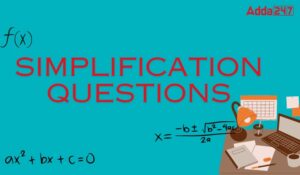Dear Students,
Quantitative Aptitude Questions for Syndicate Bank PO
Quantitative Aptitude is a very important section you must prepare if you are aiming for a job in Bank or Insurance sector. These two weeks are very important as Syndicate Bank PO and IBPS Clerk Mains are lined up. So, these 15 questions can help you practice three very important topics of Quant Section.
Q1. Three cooks have to make 80 idlis. They are known to make 20 pieces every minute working together. The first cook began working alone and made 20 pieces having worked for sometimes more than three minutes. The remaining part of the work was done by the second and the third cook working together. It took a total of 8 minutes to complete the 80 idlis. How many minutes would it take the first cook alone to cook 80 idlis for a marriage party the next day?
(a) 16 minutes
(b) 24 minutes
(c) 32 minutes
(d) 40 minutes
(e) 45 minutes
Q2. The Maithan dam has four inlets. Through the first three inlets, the dam can be filled in 12 minutes; through the second, the third and the fourth inlet it can be filled in 15 minutes; and through the first and the fourth inlet it can be filled in 20 minutes. How much time will it take for all the four inlets to fill up the dam?
(a) 8 min
(b) 10 min
(c) 12 min
(d) 18 min
(e) None of these
Q3. A mother divided an amount of Rs 61,000 between her two daughters aged 18 years and 16 years respectively and deposited their shares in a bond. If the interest rate is 20% compounded annually and if each received the same amount as the other when she attained the age of 20 years, their shares are
(a) Rs 35,600 and Rs 25,400
(b) Rs 30,500 each
(c) Rs 24,000 and Rs 37,000
(d) Rs 36,000 and Rs 25,000
(e) Rs 36,500 and Rs 24,500
Q4. A man’s average expenditure for the first 4 months of the year was Rs 251.25. For the next 5 months the average monthly expenditure was Rs 26.27 more than what it was during the first 4 months. If the person spent Rs 760 in all during the remaining 3 months of the years, find what percentage of his annual income of Rs 3305.2 he saved in the year(approximately).
(a) 14%
(b) 5%
(c) 12%
(d) 18%
(e) 22%
Q5. Two litre of water is evaporated from 12 litres of a solution containing 10% salt. Find the percentage of salt in the remaining solutions?
(a) 8%
(b) 10%
(c) 12%
(d) 14%
(e) 16%
Directions (6-10): Find the approximate value of the following questions.
Q6. 67.99% of 1401 – 13.99% of 1299 = ?
(a) 700
(b) 720
(c) 770
(d) 800
(e) 740
Q7. 5466.97 – 3245.01 + 1122.99 = ? + 2309.99
(a) 1130
(b) 1000
(c) 1100
(d) 1035
(e) 1060
Q8. 5998 ÷ 9.98 + 670.99 – 139.99 = ?
(a) 1080
(b) 1280
(c) 1180
(d) 1130
(e) 1230
Q9. -(4.99)³ + (29.98)² – (3.01) 4 = ?
(a) 554
(b) 594
(c) 624
(d) 654
(e) 694
Q10. √3135 × √577 ÷ √255= ? ÷8
(a) 620
(b) 670
(c) 770
(d) 750
(e) 700
Directions (11-15): The bar-chart shows the total number of students enrolled in different years from 2005 to 2009 in two projects P and Q, based on the bar chart solve the following questions.
Q11. If in the year 2010, there is 60% increase in the total number of students enrolled in 2009 in both projects, then find the total number of students enrolled in 2010.
(a) 282
(b) 296
(c) 292
(d) 352
(e) 362
Q12. The ratio of the total number of students of both project in 2006 to the total number of students 2009 of both project is:
(a) 22 : 27
(b) 21 : 11
(c) 11 : 21
(d) 25 : 13
(e) 27 : 22
Q13. The number of students of project P in 2006 is what per cent of the number of students of project Q in 2009?
(a) 60%
(b) 55%
(c) 58%
(d) 62%
(e) 40%
Q14. The number of students enrolled in project P from 2006 to 2009 together is what per cent more than the number of students enrolled in project Q in 2008 and 2009 together?(approximately)
(a) 18%
(b) 21%
(c) 32%
(d) 12%
(e) 28%
Q15. The total number of students enrolled in project Q from 2008 and 2009 together is what per cent more than the number of students enrolled in project P in 2005 and 2009 together? ( approximately)
(a) 65%
(b) 71%
(c) 77%
(d) 68%
(e) 81%





 Simplification Questions For Bank Exams ...
Simplification Questions For Bank Exams ...
 Quantity Comparison Questions for Bank E...
Quantity Comparison Questions for Bank E...
 Mixture & Alligation Questions for B...
Mixture & Alligation Questions for B...





